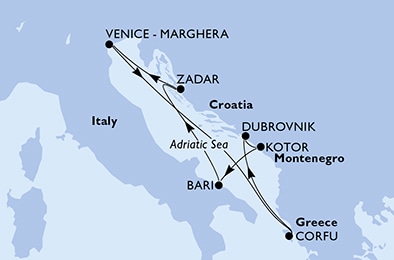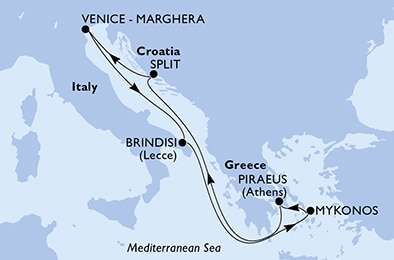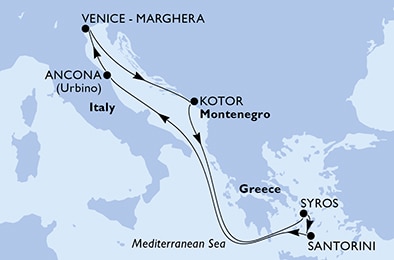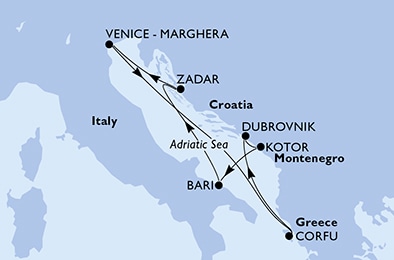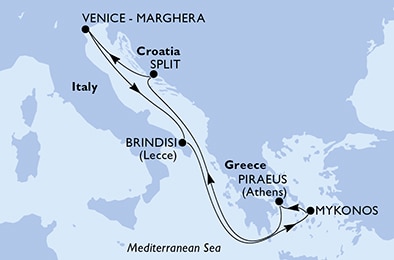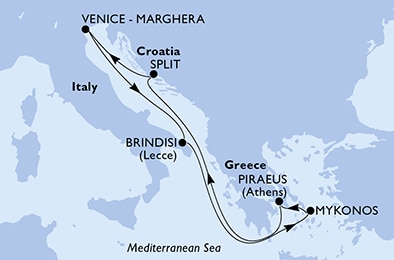
Port Venice-Marghera
Venice, the enchanting capital of Italy's Veneto region, is renowned worldwide for its unique setting on a network of canals, breathtaking architecture, and rich history. Built on over 100 small islands in a lagoon of the Adriatic Sea, Venice is a city without roads, where gondolas and vaporettos (water buses) glide through its iconic waterways. At the heart of the city lies Piazza San Marco (St. Mark’s Square), home to the stunning St. Mark’s Basilica, adorned with intricate mosaics, and the elegant Doge’s Palace, a masterpiece of Gothic architecture that once served as the seat of Venetian power. Nearby, the Bridge of Sighs offers a glimpse into the city’s storied past.
Venice’s charm extends to its smaller canals, picturesque bridges like the Rialto Bridge, and vibrant neighborhoods such as Cannaregio and Dorsoduro, where visitors can discover authentic local life and hidden gems. The city is also a center of art and culture, hosting the prestigious Venice Biennale and the internationally acclaimed Venice Film Festival. Whether wandering its maze-like alleys, enjoying a gondola ride, or savoring traditional Venetian dishes like sarde in saor or risotto al nero di seppia, Venice captivates with its timeless beauty and romance, making it one of the most magical destinations in the world.
History
Venice, located in northeastern Italy, is a city renowned for its canals and unique history. It was founded around the 5th century CE by refugees fleeing invasions of the Italian mainland after the fall of the Western Roman Empire. Built on a series of small islands in the Venetian Lagoon, Venice became a powerful maritime republic by the Middle Ages, controlling trade routes between Europe and the East. Its wealth and influence grew through commerce in goods like spices, silk, and salt, making it one of the most prosperous cities during the Renaissance. Iconic landmarks such as St. Mark’s Basilica and the Doge’s Palace reflect this golden age.
By the 18th century, Venice's power declined as other European powers emerged, and it fell under the rule of the Austrian Empire and later Napoleonic France before becoming part of unified Italy in 1866. Today, Venice is a UNESCO World Heritage Site celebrated for its artistic heritage, architecture, and enduring charm. Known as the “Floating City,” it attracts millions of visitors annually, though it faces challenges such as rising sea levels and tourism. Venice remains a symbol of resilience, blending its rich history with modern efforts to preserve its cultural and environmental legacy.
Update on Venice entrance fee.





 With bus transport to the port
With bus transport to the port



.jpg)








